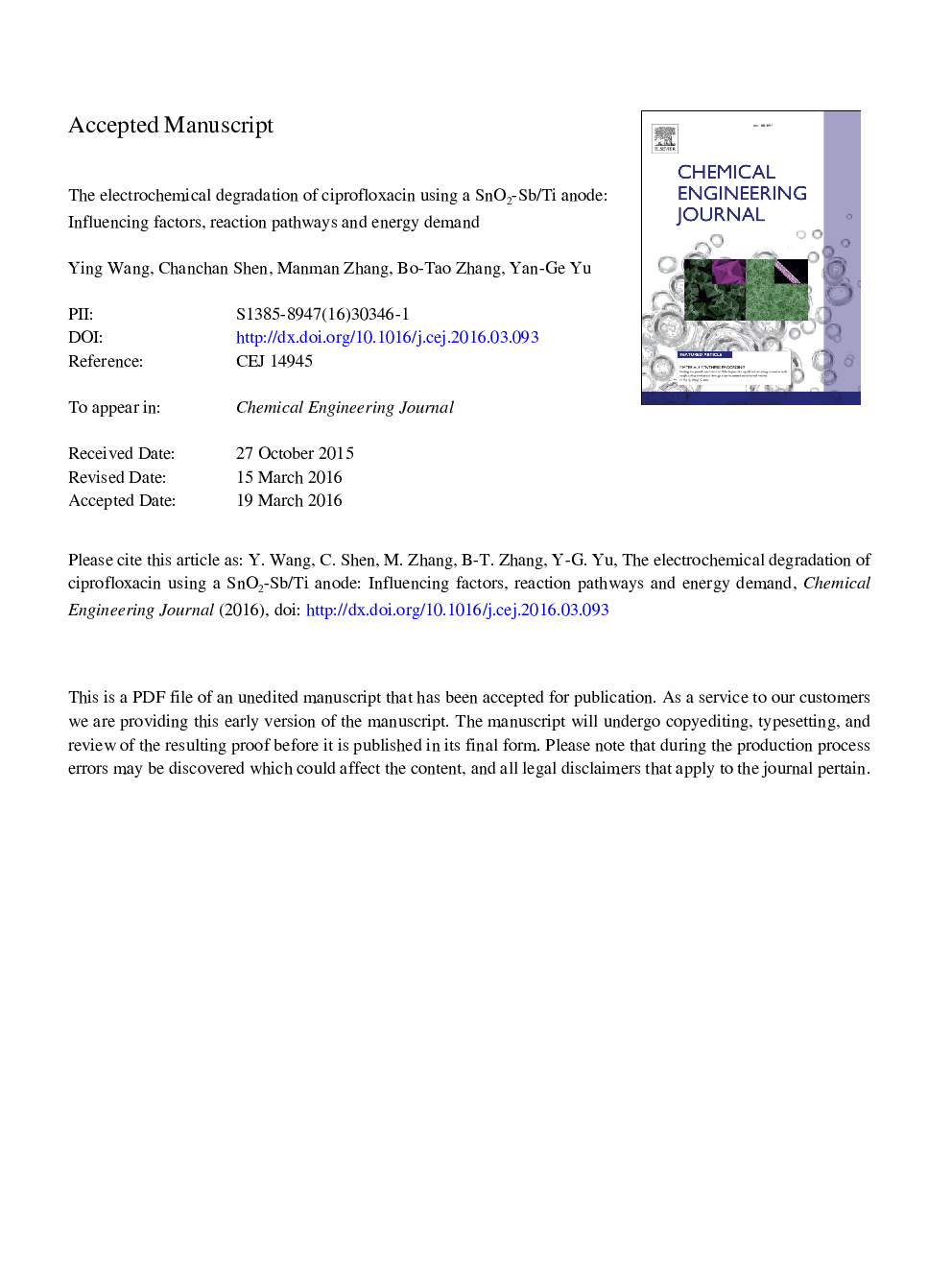| Article ID | Journal | Published Year | Pages | File Type |
|---|---|---|---|---|
| 6581683 | Chemical Engineering Journal | 2016 | 42 Pages |
Abstract
The electrochemical oxidation of ciprofloxacin (CIP) using a SnO2-Sb/Ti electrode was systematically investigated. The effects of the current density, initial concentration of CIP, and initial pH were evaluated. The results showed that electrochemical oxidation, using a SnO2-Sb/Ti electrode was highly effective for the degradation of CIP. After 120Â min, the removals of CIP (50Â mg/L), COD and TOC at a current density of 30Â mA/cm2 were about 99.5%, 86.0%, and 70.0%, respectively. The reaction followed a first-order kinetics model. The current density and initial concentration of the CIP exerted a prominent effect on the degradation of CIP, COD, and electrical energy demand, while the initial pH had no effect. The electrochemical degradation pathways, of CIP in aqueous solution, were studied using ion chromatography and liquid chromatography coupled with mass spectrometry (LC-MS). Three major degradation pathways were proposed: oxidation of the piperazine ring, hydroxylation of the quinolone moiety, and defluorination (OH/F substitution). Inorganic N compounds were NH4+ and NO3-. F was reduced to Fâ.
Related Topics
Physical Sciences and Engineering
Chemical Engineering
Chemical Engineering (General)
Authors
Ying Wang, Chanchan Shen, Manman Zhang, Bo-Tao Zhang, Yan-Ge Yu,
